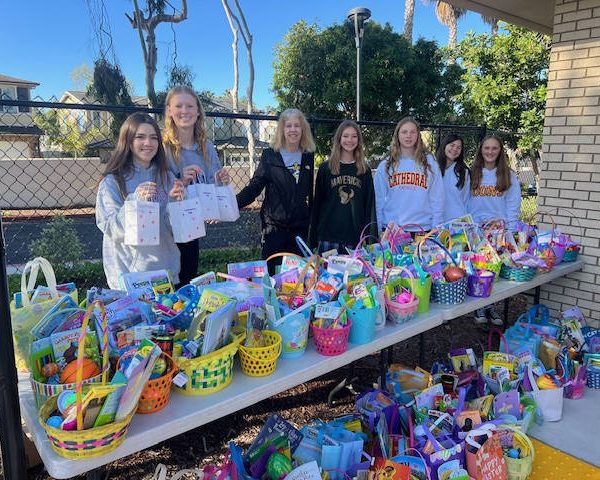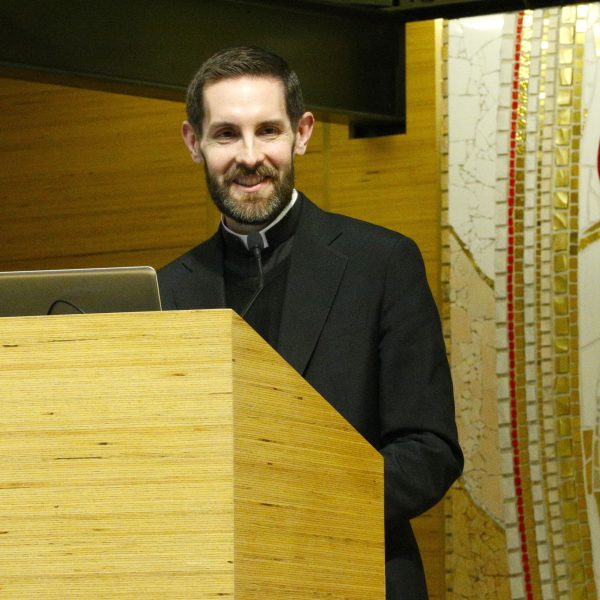SAN DIEGO — Elizabeth Joseph was barricaded inside a room with fellow Catholic school educators on Aug. 2 when the gunshots started.
Once law enforcement gave them the all-clear to go outside, they saw the many wounded bodies sprawled on the ground and began what Joseph described as “the chilling process” of trying to stop their bleeding.
The guns that day were loaded with blanks. And the victims’ blood, which felt so real as it gushed over Joseph’s hands, was fake.
No one wants to imagine a scenario in which there is an active shooter on campus, or where the lives of seriously wounded students may depend on whether a faculty member knows how to apply a tourniquet properly.
But local Catholic school educators are forcing themselves to contemplate the unthinkable, all in the name of protecting the children entrusted to their care.
Three-member teams from 43 Catholic elementary schools are participating in the San Diego County Office of Education’s intensive, four-day Diamond Safety Team Training series, which puts them through intensely realistic simulations of crisis situations, equips them with practical threat-assessment strategies, and ultimately will help them to develop a comprehensive campus-safety plan.
Educators from local Catholic high schools also will have the opportunity to begin the training in October.
“It’s better to be prepared and not need this training – and that is what we pray for every single day,” said Leticia Oseguera, diocesan superintendent of schools. “But we want to make sure that, should any type of situation arise, even if it’s minimal, that our leaders, our teachers feel confident, feel prepared.”
Tim Ware, coordinator of school safety and security services for the San Diego County Office of Education, said Diamond Safety Team Training was created about two and a half years ago and draws from two decades of learning from the successes and failures of others in responding to on-campus emergencies.
He said it bundles several of the individual trainings offered by the Office of Education, including those on threat assessment, active-shooter situations and bullying prevention, into one comprehensive package.
Diocesan educators attended their first day of training Aug. 1 on the campuses of St. Therese of Carmel Parish and neighboring Notre Dame Academy. About 140 people participated in the five-hour session, which introduced them to the Diamond Safety Team concept and trained them in how to proactively identify concerning behaviors on campus and de-escalate situations that could lead to violence.
That first day, participants were made to understand that “everybody has a piece of the puzzle when it comes to threat assessment” and that it isn’t immediately knowable whose piece will prove to be “the deciding factor” in preventing bloodshed, Ware said.
The day closed with a “walk-and-talk” training, during which participants were led through each step of law-enforcement’s response to an active-shooter event.
The second day was held Aug. 2 for one group of diocesan educators and Aug. 8 for a second group. Both took place at the Kearny Mesa-based Strategic Operations, Inc., a provider of what it describes as “Hyper-Realistic tactical training services” for law enforcement, first-responders, the military and others.
The day’s activities included an introductory “stop-the-bleed” course, as well as the opportunity to apply those techniques during an active-shooter training exercise that featured mannequins and professional actors in “cut suits” that would only stop bleeding if the necessary life-saving measures were performed correctly.
Participants also were trained in radio communication during emergencies and attended presentations by subject-matter experts on bullying prevention and how to identify drug paraphernalia and “ghost gun” parts if they turn up on campus.
Kyle Lira, a teacher at Sacred Heart School in Brawley, described the “stop-the-bleed” training as “a life-or-death, simulated situation of Universal Studios-caliber.”
For Elizabeth Joseph, principal of St. Francis of Assisi School in Vista, it was “intense.”
“The sights and sounds were very realistic,” she said, “and when I thought that this could be one of my students, my emotions moved from fear to strength. I would do anything to protect and save one of my students’ lives.”
Days 3 and 4 of the training are scheduled for Sept. 28 and Nov. 16, respectively, both at the diocesan Pastoral Center. The days’ agenda will include additional threat-assessment scenarios and provide school teams with the chance to work on improving their campus-safety plans in light of the lessons they’ve learned.
Oseguera said that the schools will receive a template, which they can modify for their campuses. She said there will be certain “essential elements” that all schools’ safety plans must include, along with other recommended items. Each school will form its own safety committee and will have a few months to complete its plan and submit it to the Office for Schools.
The Schools Office plans to develop school-safety guidelines that will become part of each school’s “yearly checklist” every summer, she said.
Through Ware, the schools also will be connected with the school resource officer responsible for their geographical area.
David Blair, vice principal and eighth-grade teacher at St. Charles School in Imperial Beach, reflected on his experience.
“The majority of the training has to do with prevention and the ability to come up with preemptive plans before the disaster happens,” he said, “and a lot of that has to do with building a culture of care and positivity.”
He noted that Catholic schools excel at the 80% of the training that focuses on creating such a culture, which reduces the likelihood of on-campus violence.
Active-shooter drills and the like represent the remaining 20%, which focuses on how to respond to such incidents if they occur.
After sharing his experience of one of those drills, he said, “Those experiences will stay with me forever, and the skills that I’ve learned will definitely transfer over.”
Joseph said, “I am glad that our diocese is providing this outstanding training for all the schools. It is a true blessing for all of us.”




